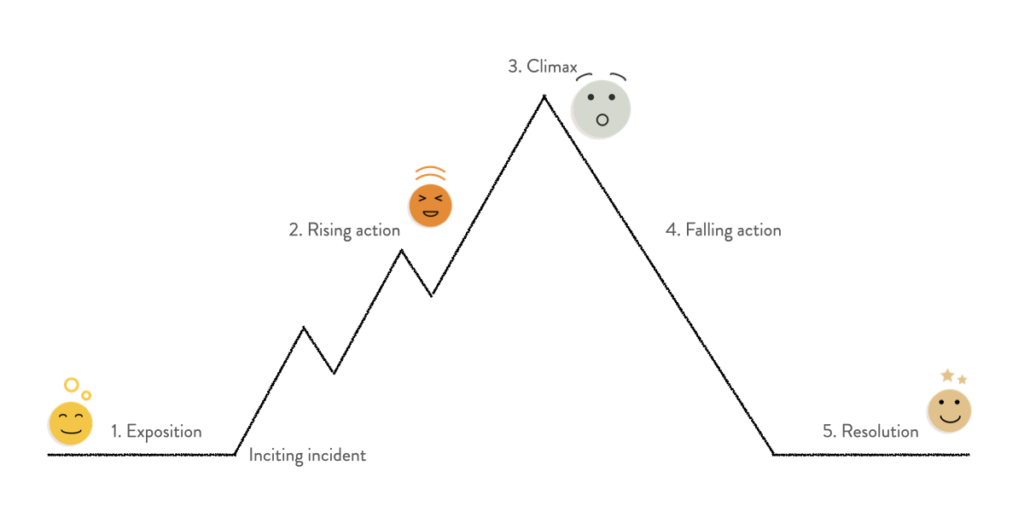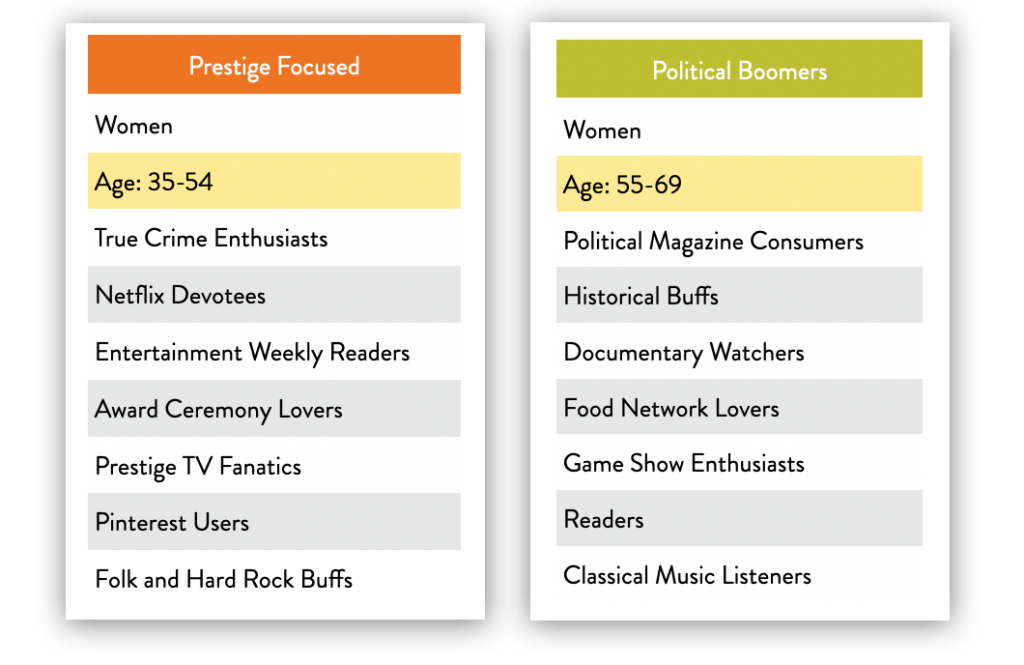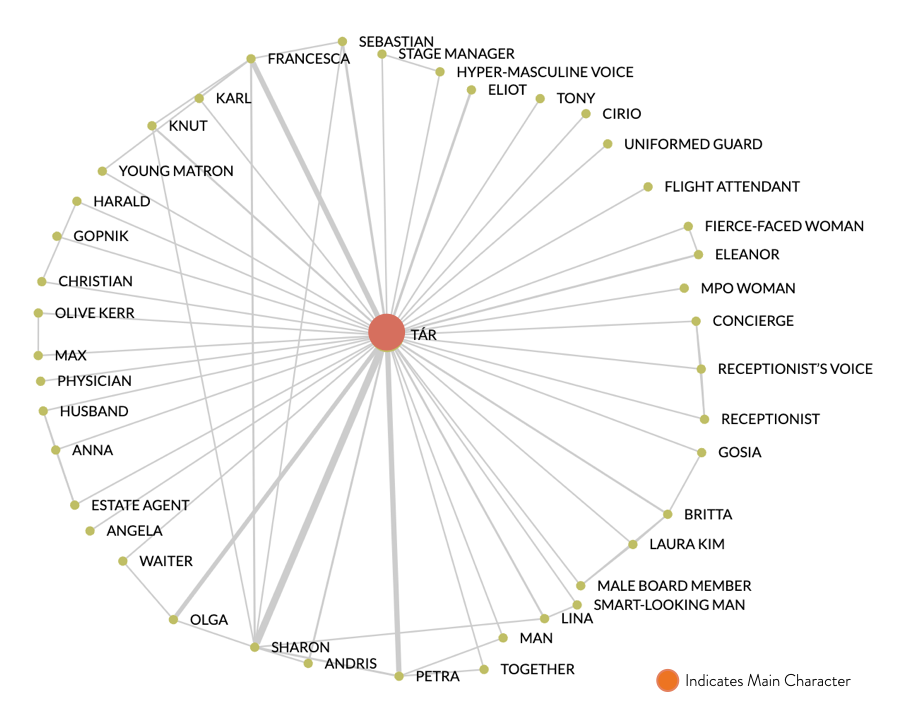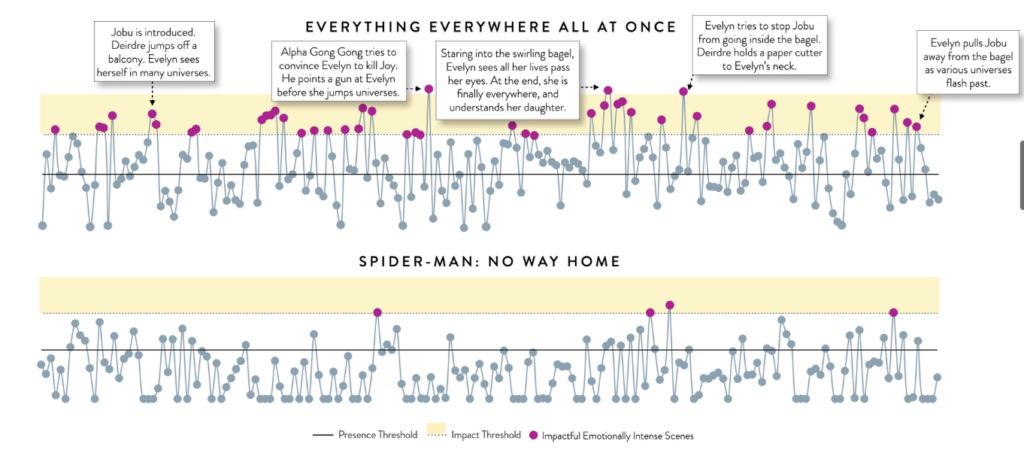What is AI Story Analytics?
Posted: November 1, 2017 | Updated: April 6, 2023
Posted In: Articles
Storytelling is human nature
StoryFit is single-mindedly focused on applying the latest AI technology to the entertainment industry for the purpose of understanding the true power of stories. We sit at the intersection of technology and media, and are dedicated to enhancing the process of storytelling.
Our artificial intelligence engine is specifically built to solve the most common challenges entertainment companies face in delivering the right content to the right audience. We bring narrative, character and audience insights to each stage of a story’s lifecycle, from creative development, to marketing and sales to content libraries – uncovering the risks, strengths and opportunities, reducing risk and speeding successful content delivery.
As so much of the history of artificial intelligence makes clear, humans are driven by a desire not just to communicate, but to understand the nuances and meaning of that communication beyond just the words on the page. To understand why the words make us stir, incite violence, or begin profound romance.
Beginning with asking kindergartners to draw themselves with their parents at home, we have to be taught narrative form as children to help us make order of the world around us. To derive meaning from apparently meaningless occurrences and assign value to relationships. It all comes back to story: a universal logic system. Inciting action, climax, falling action, resolution.

Cause and effect. Consequence and reward. Villains and threats, heroes and allies. All of these significant and community-forming concepts are conveyed through story form. So understanding stories is one of the most resonant ways to understand human desire, development, and potential.
We see this fact reflected in our entertainment choices. We don’t sit down to enjoy textbooks or manuals, and we don’t recline on a Sunday afternoon to watch training videos and sexual harassment protocols. Arguably, all would be more interesting and more materially productive, but they don’t satisfy that basic human need to understand the world through story. To engage in empathy and learn. Stories are the basis of every viable form of media — movies, books, television, video games, RPGS, etc.
By focusing on that core story through machine learning, StoryFit is able to deliver better analytics that can tell users meaningful information about their customers and content, insights that will prove useful and meaningful to other projects and give them the tools to connect meaningfully and quickly with their audience.

After all, as Google Engineer Inderjeeet Mani said, “computer science isn’t as far removed from the study of literature as you might think.”
“computer science isn’t as far removed from the study of literature as you might think.”
Inderjeeet Mani, Google Engineer
Using data to mine stories
By creating rules for a computer to recognize story elements and emotions help us mimic human experience for study. Those rules start with natural language processing and sentiment analysis which are able to infer the emotions different linguistic styles, circumstances, diction, and perceived emotional arc evoked in readers.
At a glance, sentiment analysis is fairly straightforward: text is analyzed and, using natural language processing, each part of the text is categorized positive–happy statements–or negative–sad/angry statements. Within each language, words can be determined positive (elated, kiss, jump), negative (smash, kill, cry), or neutral (the, a, road). Take these altogether and graph the results, and you can see the emotional arc of a text mapped out in a physical form, called a sentiment map.
This is just the beginning, from there we can group the language, with the surrounding action, and the thousands of other features we measure to infer how a human might connect to a particular scene or emotional arc. Of course, AI is as good as the data it’s fed and the direction it’s given. In this case, AI is created through a process of machine learning, whereby it basically uncovers and then replicates automated decision-making based on the parameters it’s delivered. Then we can then check our work with real humans!
Once the algorithm is well-trained and directed, then AI is reliable. For one thing, it’s consistent. It doesn’t get tired, need to take a break, or get distracted by personal reading preferences.
Humans are amazingly creative, observant, and resourceful. But at a certain point, our brains just can’t process any more data any more quickly.
Meanwhile, a computer using AI continues doing the task at hand, not changing it’s analysis due to fatigue, overwork, boredom, or a headache.
Using Data to Amplify Human Creativity
The goal of machine learning or artificial intelligence is not to replicate human creativity, but instead amplify it. At StoryFit, our AI is not built to proscribe quality or replace the editor. It empowers them with more data than they could ingest in a lifetime, distilled into actionable insights.
The benefit of a computer doing the analysis is that it can discover the latent aspects of a person or novel. So, while authors may have their own identifiable style, there are underlying components of a novel that a computer can see better than humans.

Films, TV series, video games, podcasts hold undeniable cultural weight– and they are also data. Unlike consumer data that, even formless, has proven itself so valuable, written text has inherent rules and formations. And each deviation from one rule has its own set of rules, deviations, and acceptable actions that AI can learn, compare, and predict, just like humans can.
When fans of a book discuss a possible connection of a white lily to the heroine’s inevitable death, they are discussing the pattern identified in a semi-closed system. They are performing one tiny fraction of the computational potential of an algorithm trained on literature.
StoryFit integrates data, elemental story analysis, and market research to improve audience engagement and targeting, determine right market fit, and mitigate investment risk. Everything you need to quickly and painlessly make informed decisions, edge the competition, and drive consumer engagement.

Implementing Story Analytics
AI holds a lot of future payoff for storytellers who implement it early and often. Since it can learn, the real issue is what question do you want to tackle first? At StoryFit, we see direct and immediate impacts to discoverability, audience targeting and engagement, recommendation engines, efficiency, and acquisition risk assessment.
Specifically, AI delivers Story Intelligence which can aid in:
- Data integration
- Story and Character Analytics
- Improve Audience Targeting and
- Increase Audience Engagement
- Metadata & Discoverability
- Predict audience appeal and resonance
Companies can take advantage of this in three applications:
1. StoryFit Story Intelligence Metadata
StoryFit uses AI to craft metadata that increases discoverability, engagement, and sales. Supplying metadata is proven to enhance discoverability–accurate metadata further increases both discoverability and sales for new and existing content.
AI scans the text of a story and extracts the words, phrases and terms that describe the story’s content, impact, and sentiment and pulls the key elements based upon the client’s goal, categorizing and identifying aspects of stories important for optimization.
The software further analyzes, tests and updates recommendations for improved performance. Story Intelligence Metadata generated by StoryFit™ AI provides our customers with the right metadata, optimized for accuracy and performance StoryFit Metadata powers content creators to succeed by breathing life into old classics or titles that just never found their audience, ensuring audiences connect and find stories they will love, and optimizing performance across IP lifecycle.
2. StoryFit Content Analytics
Our content insights and analytics enable entertainment companies to learn their stories’ secrets, support decisions, pitches and process with data built from industry top performers and veteran wisdom. StoryFit™ reads your script in seconds and measures it against key points that have proven correlations to commercially successful outcomes. The metrics result from analysis of thousands of high-performing titles and allow content creators and producers to find new scripts with the best chance of success and better position existing investments, identify better comps, and kickstart marketing.
Included in the content analytics are market readiness ratings, style insight, story arc, faceted comps, accessibility index, and predictive audience profiles.
3. StoryFit Custom AI Story Analytics
StoryFit AI can learn and adapt to its environment; by listening to your business problems, and analyzing your specific data—be it customer profiles, performance history, web behavior, and more. — StoryFit can tailor a solution just for you.
By applying our algorithms to your proprietary data and publicly available information you can create a tactical maneuver that amplifies your strengths and allows you to move faster than your competitors. Just some ways publishers can design their own AI with StoryFit are to:
- Superpower your own recommendations engine.
- Rapidly identify important performance indicators and categorize content to suit your marketing goals.
- Use own top performers as a rubric to find new material and uncover potential powerhouse titles in your backlist
- Surface new audiences for old content, and new content for your loyal audiences
- Identify scripts that match your unique brand tastes and generate comps from your own library.

